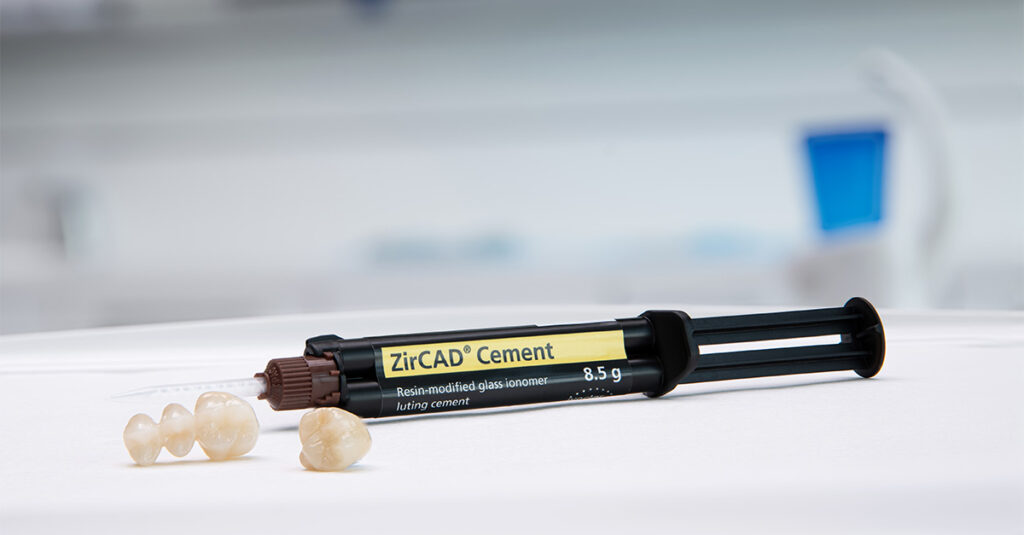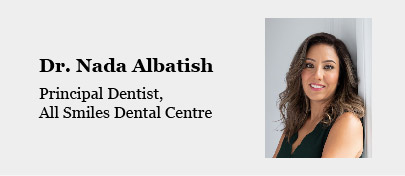
In the previous article of this three-part series, I talked about general principles for selecting a cement for dental restorations. Here, I focus on the optimal cement for Zirconia restorations. Known for its strength and superior esthetic results, Zirconia—a crystalline oxide of zirconium—has surged in popularity in recent years.
Cementing the Deal
Adhesive, self-adhesive and conventional cements all work well for the cementation of Zirconia restorations. For retentive preparations (with a 6-degree taper and 4mm prep height), conventional cement is the preferred choice for its ease of use, reliability, and cost-effectiveness. My own practice took a step forward with the incorporation of ZirCAD cement, a new conventional cement designed for use with retentive preparations. This high-performance, resin-modified glass ionomer cement has enabled me to deliver predictable results with Zirconia restorations, with the extra benefit of easy handling and clean-up.
Because of its resistance to moisture and acid, I find ZirCAD cement especially valuable when moisture control is a challenge. The thixotropic material allows for a controlled flow that stops at the margins, allowing for easy clean up. The fluoride release of this resin-modified glass ionomer cement prevents microleakage, bacterial contamination, and decay. This makes ZirCAD cement a logical choice for patients, especially those at higher risk of caries.
Several other features combine to enhance ZirCAD cement’s reliability, user friendliness, and efficiency. To begin with, the cement does not require any primer or conditioner. After restoration seating, the cement extrudes at the margins and stays in place, without excessive flow. Tack curing (a one-second process in pre-cure mode when using the Bluephase Powercure curing light) brings the cement to a gel state, which enables the removal of excess material without waiting time.
Note: procedures that do not involve retentive preparation require an adhesive cement. Variolink Esthetic offers exceptional chemical bond strength and superior shade stability for all types of ceramic restorations and materials, including Zirconia.
Zirconia’s Companion Cleaner
The effectiveness and longevity of Zirconia restorations depend on a reliable, efficient cleaning method. That’s because phosphates from saliva bind to Zirconia, which interferes with bond strength and can lead the restoration to come off. I tell colleagues that if a crown comes off and the cement is on the tooth, it probably means the intaglio surface of the restoration needs to be properly cleaned.
The cleaning options reported in the literature vary in efficiency and reliability. In my practice I turn to Ivoclean®, a universal cleaning paste indicated for extra-oral cleaning of pretreated ceramic and metal restoration surfaces contaminated during intra-oral try-in. Ivoclean effectively cleans the bonding surfaces of prosthetic restorations after intra-oral try-in, which creates optimal conditions for both cementation and for adhesive luting procedures. The ease of application sets Ivoclean apart: you apply it to the intaglio surface of the restoration, allow it to react for 20 seconds, and then rinse and dry: simple, practical, and effective.
The Takeaway
Dental restorative materials cannot be considered in a vacuum: using the right combination of materials and cements can create synergies, as exemplified by the Zirconia/ZirCAD cement pairing. Used together, these materials simplify the restorative process and optimize the quality and durability of the results.
Optimizing Bond Strength Dental researcher Dr. Markus Blatz developed a method called APC, which helps optimize the predictability of adhesive bonding to zirconia restorations.¹ APC comprises three practical steps: 1) air-particle abrasion, 2) zirconia primer (such as Monobond Plus), and 3) adhesive cement (such as Variolink Esthetic). The method yields a bond strength comparable to that of glass ceramic.
1. Blatz MB et al. Compend Contin Educ Dent 2016;37:611.

